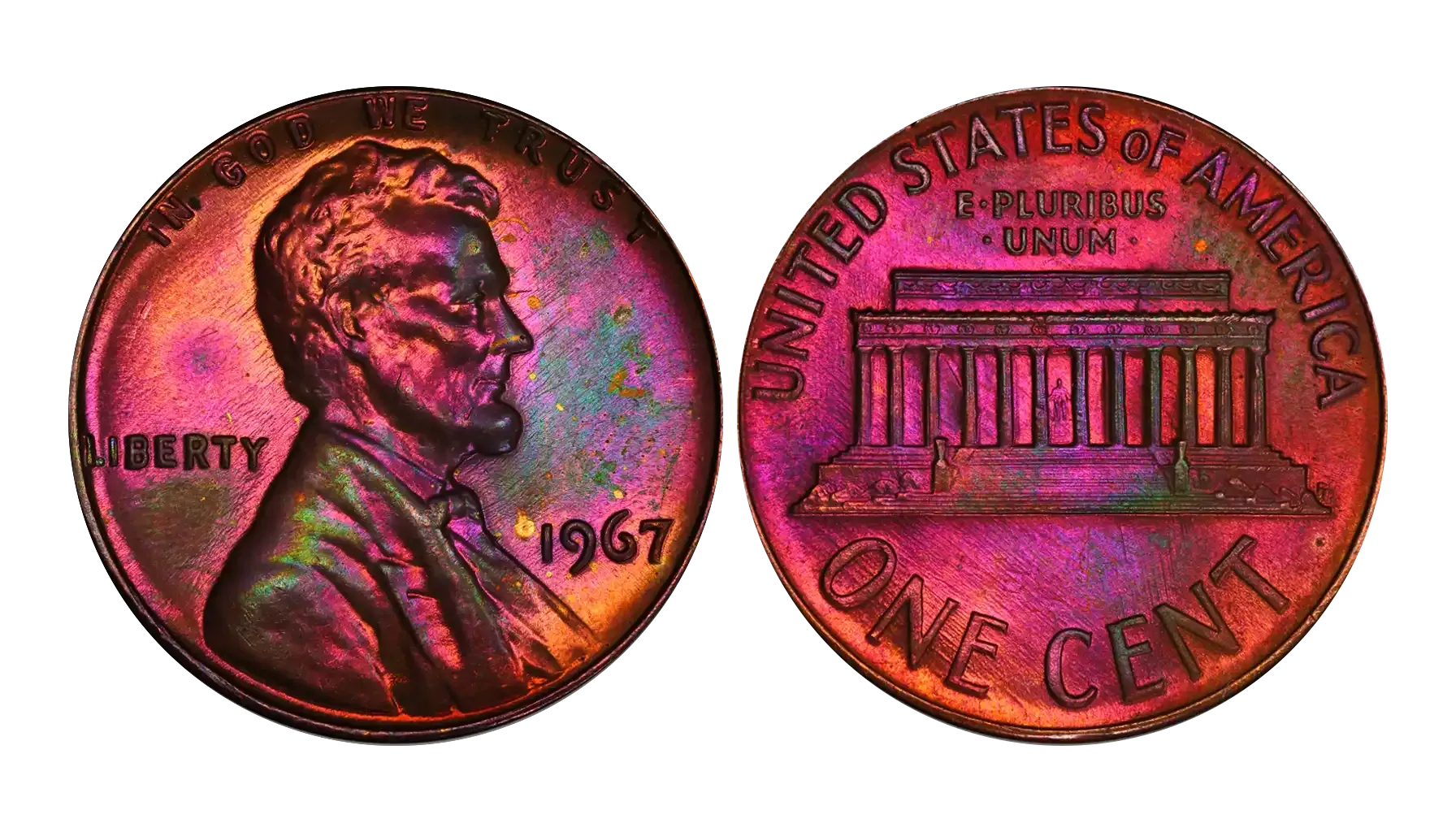Contents:
Here's a short list of essential advice for coin collectors:
Educate Yourself: Learn about coin grading, mint marks, key dates, and common errors for the series you collect. Don’t misidentify the series (for example, 1922 Gold 20 Dollar coin is a detached series) Knowledge is your best tool.
Store Coins Safely: Protect your collection from environmental damage (humidity, air exposure, PVC plastics) using inert, archival-safe holders like Mylar flips, non-PVC pages, or certified slabs.
Invest in Good Magnification: A good jeweler's loupe (10x magnification is standard) is indispensable for identifying details, mint marks, and errors.
Consider Professional Grading: For valuable coins or key dates, consider having them professionally graded by services like PCGS or an AI coin identifier for authentication and objective condition assessment. Like that you can search how much is a 1922 dollar coin worth by yourself.
Content Of 1922 $1 Peace Value
Understanding the One Dollar coin 1922 value begins with its metallic composition.
Composition: 90% Silver, 10% Copper
Total Weight: 26.73 grams
Silver Purity: 900 fine silver
Actual Silver Weight: 24.057 grams
The substantial silver content of approximately 24.057 grams means that every liberty One Dollar 1922 coin value, regardless of its condition, possesses an inherent melt value. This fundamental value fluctuates daily with the global market price of silver, ensuring even the most circulated examples retain a significant floor price.
1922 $1 No Mint Mark Peace (Philadelphia)
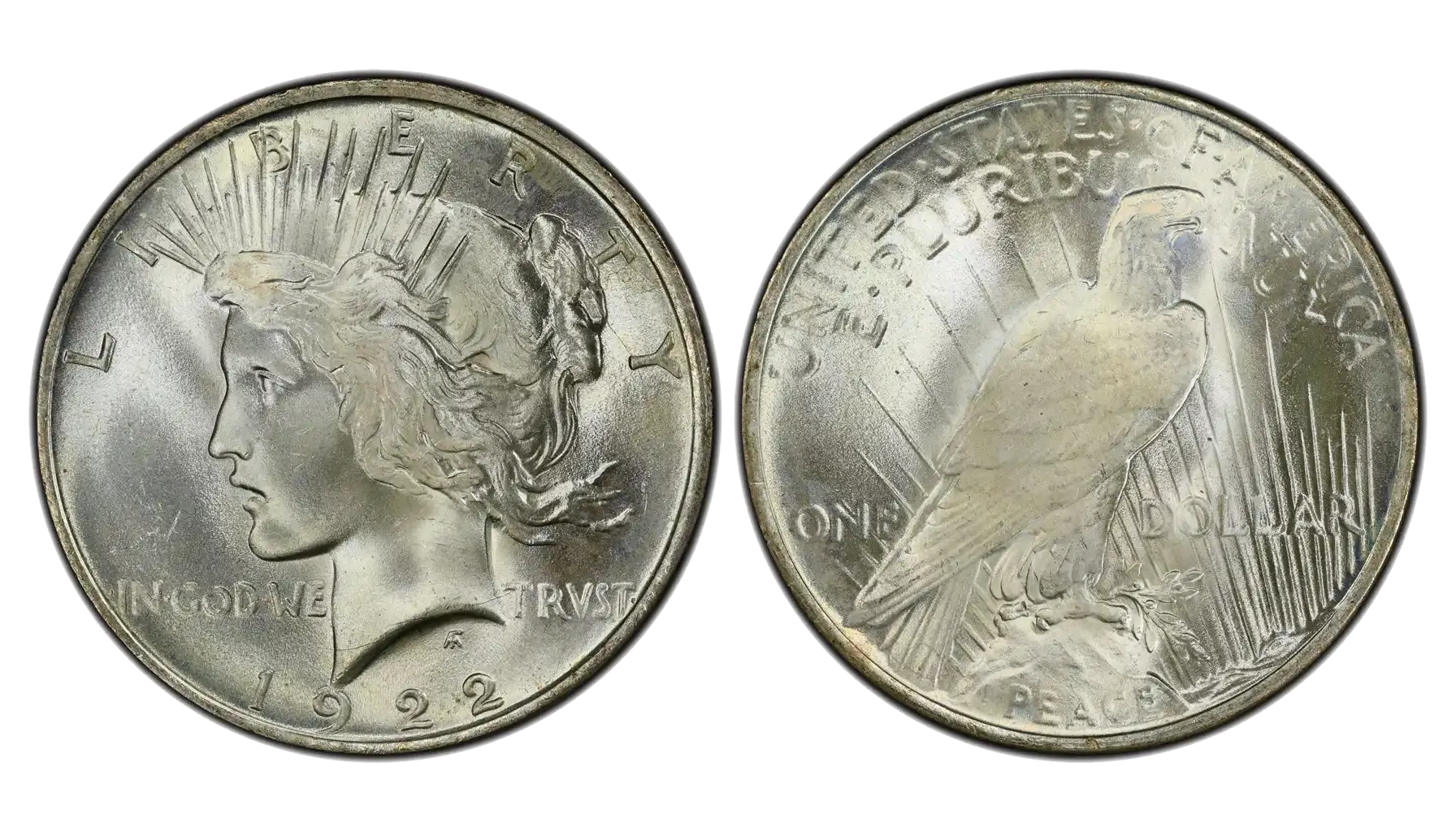
Composition: 90% Silver, 10% Copper
Weight: 26.73 grams
Diameter: 38.1 millimeters
Mintage: 51,737,000
Special Features: The obverse of the liberty dollar coin 1922 features a radiant image of Lady Liberty, and a bald eagle perched on a rock with an olive branch on the reverse. The absence of a mint mark denotes production at the Philadelphia Mint.
The 1922 US dollar coin is a Peace Dollar, a popular series minted after World War I. Following the currency's rushed debut in late 1921, the US Mint spent the early part of 1922 refining the design. The high relief of the 1921 issue proved problematic for striking, leading to a softer, more low-relief design and subsequent years. While some patterns exist, true 1922 Silver Dollar proof coin issues are not widely known for this year, as proofs were not typically struck for general circulation issues of this type during this period.
The massive mintage figure for 1922 was largely driven by the Pittman Act of 1918, which mandated the melting of millions of Silver Dollars to help Great Britain during WWI and required their replacement with new Silver Dollars. The post-WWI economic climate also saw a continued need for silver coinage, further contributing to the immense production volume from Philadelphia. So, the One Dollar Silver Coin 1922 value is a key consideration for collectors seeking to appraise this historic Peace Dollar.
Market Value
Grade | Value |
G-4 (Good) | $28 - $32 |
F-12 (Fine) | $30 - $35 |
VF-20 (Very Fine) | $32 - $40 |
XF-40 (Extremely Fine) | $35 - $50 |
AU-50 (About Uncirculated) | $45 - $65 |
MS-60 (Mint State) | $75 - $120 |
MS-63 (Mint State) | $150 - $250 |
MS-65 (Mint State) | $400 - $800 |
MS-66 (Mint State) | $1,500 - $3,000 |
MS-67 (Mint State) | $10,000~ |
Value of 1922 Silver Dollar coin is approximate and may vary depending on the condition, market demand, and other factors.
1922 $1 Peace D (Denver Mint)
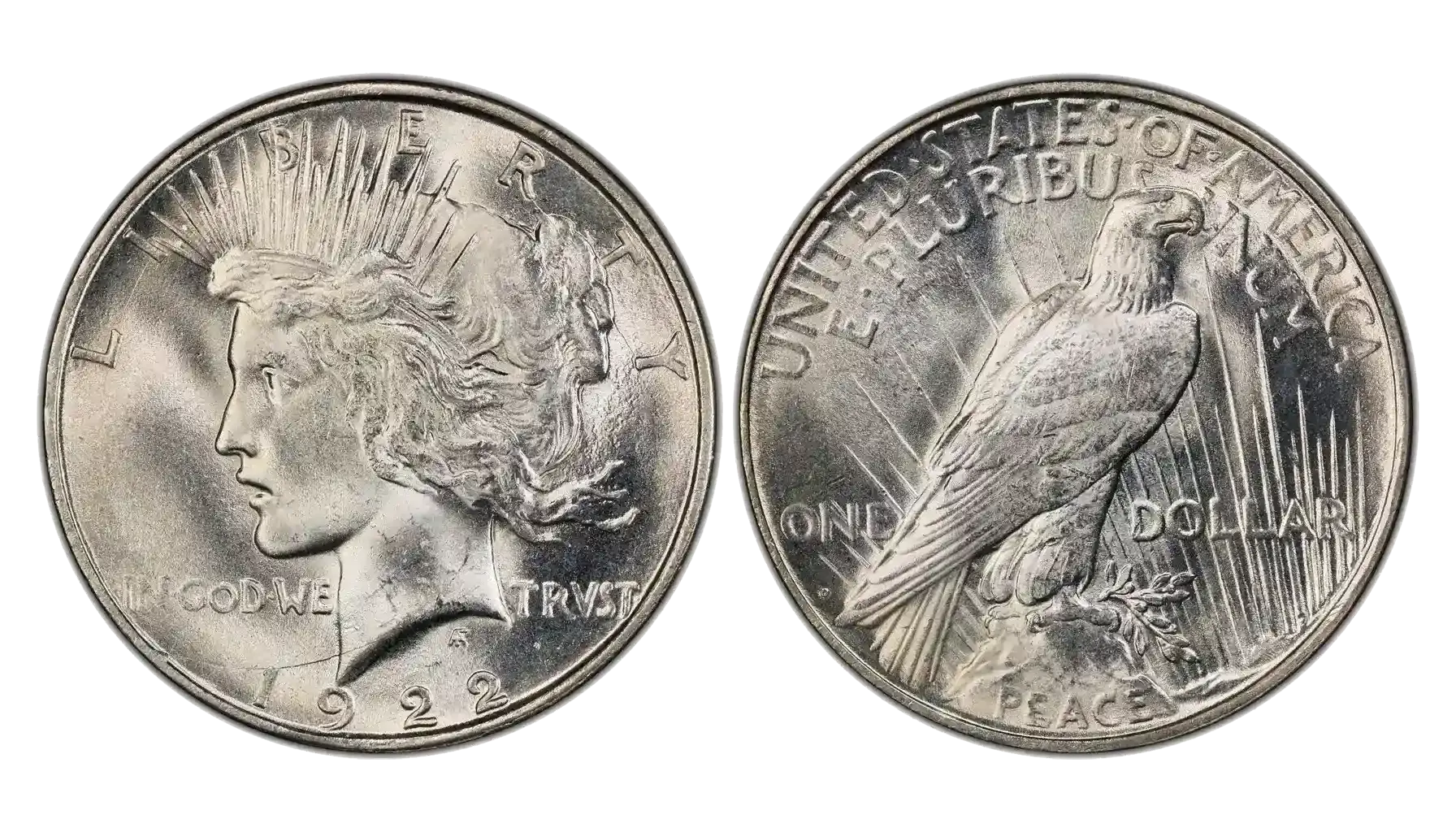
Composition: 90% Silver, 10% Copper
Weight: 26.73 grams
Diameter: 38.1 millimeters
Mintage: 15,063,000
Special Features: Features Lady Liberty on the obverse and the eagle on the reverse. The "D" mint mark is located on the reverse, below the eagle's tail feathers.
The Importance Of 1922-D
Transition to Low Relief: The most significant aspect of the 1922 Peace Dollar production across all mints was the transition from the problematic high-relief design of 1921 to a new, lower-relief design. The 1921 High Relief dollars were difficult to strike, causing excessive die breakage and slowing production. The US Mint quickly realized this was unsustainable for the millions of money required.
The Denver Mint, like Philadelphia and San Francisco, began striking Peace Dollars in 1922 using the new, modified low-relief dies, which allowed for much faster and more efficient production.
Pittman Act Fulfillment: The primary driving force behind the massive 1922 mintage at all three mints, including Denver, was the Pittman Act of 1918. This act required the US Treasury to melt up to 350 million Silver Dollars (mostly Morgan Dollars) to provide silver to Great Britain during World War I.
Crucially, the act also mandated that these melted dollars be replaced with new Silver Dollars after the war. By 1922, the mints were in full swing replacing these melted pieces. The 15,063,000 tokens struck at Denver were a substantial contribution to this colossal task.
Regional Distribution: The Denver Mint primarily served the needs of the central and western United States. The Silver Dollar coins 1922 D were distributed throughout this region to facilitate commerce in a rapidly growing post-WWI economy. So, the 1922 coin dollar is a common but historically significant piece of American money.
Market Value
Grade | Value |
G-4 (Good) | $28 - $32 |
F-12 (Fine) | $30 - $35 |
VF-20 (Very Fine) | $32 - $45 |
XF-40 (Extremely Fine) | $38 - $60 |
AU-50 (About Uncirculated) | $55 - $80 |
MS-60 (Mint State) | $90 - $150 |
MS-63 (Mint State) | $180 - $350 |
MS-65 (Mint State) | $550 - $1,100 |
MS-66 (Mint State) | $2,000 - $4,000 |
MS-67 (Mint State) | $15,000~ |
1922 Dollar Coin value today may vary depending on the coin's condition, market demand, and other factors.
1922 $1 Peace S (San Francisco Mint)
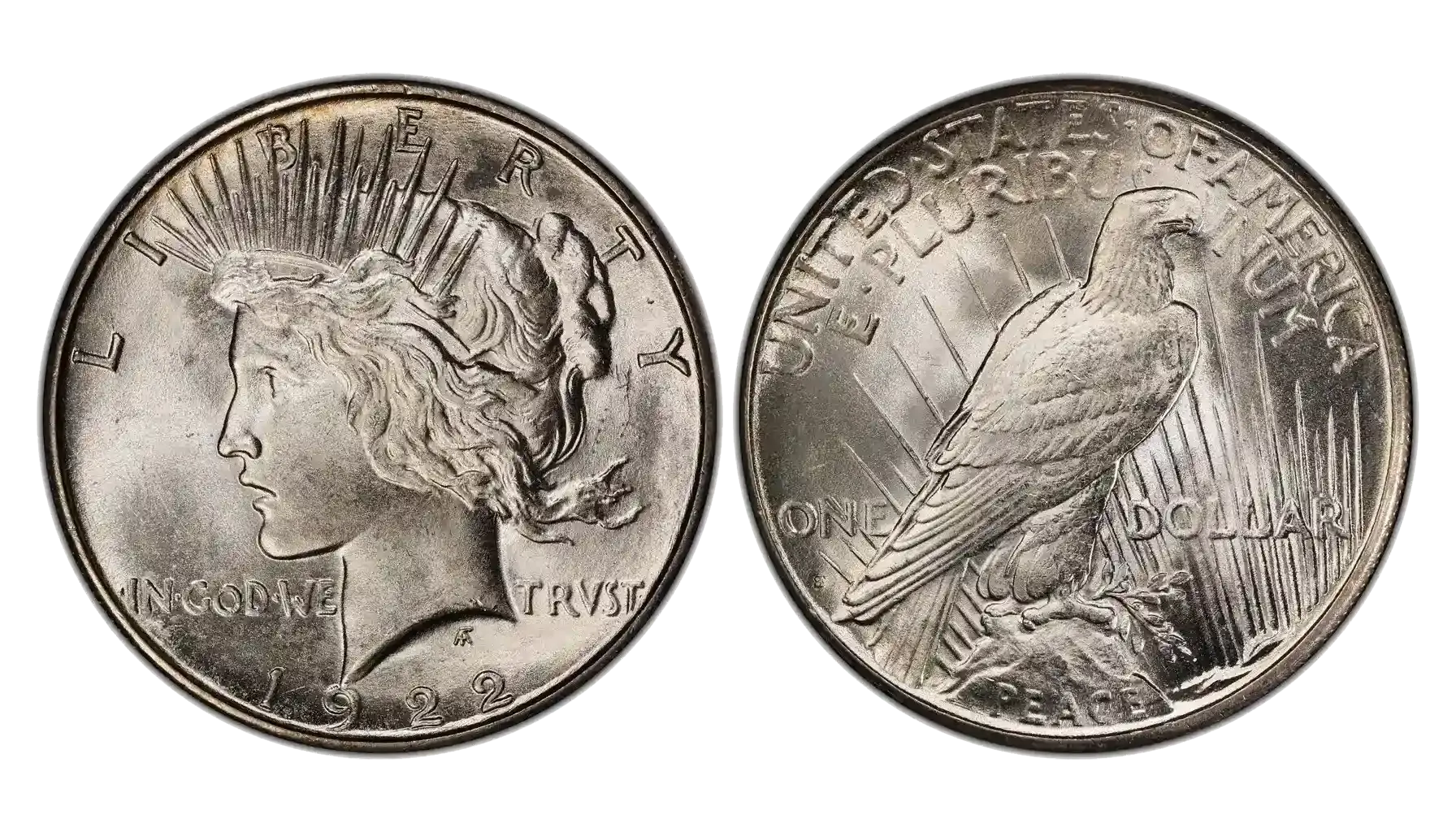
Composition: 90% Silver, 10% Copper
Weight: 26.73 grams
Diameter: 38.1 millimeters
Mintage: 17,475,000
Special Features: Features Lady Liberty on the obverse and the eagle on the reverse. 1922 One Dollar coin mint mark is located on the reverse, below the eagle's tail feathers.
The 1922 Peace Silver Dollar coin value in uncirculated condition can reach hundreds of thousands, especially for "S" mint marks. San Francisco often had a unique role in the US Mint system, as it served as a gateway for trade with Asia. While the primary impet US was domestic demand driven by the Pittman Act.
The presence of these pieces on the West Coast would have facilitated commercial activities both domestically and internationally. Like the other mints, San Francisco quickly adopted the new low-relief design to ensure efficient and high-volume production, and it fully reflects in how much is a 1922 Silver Dollar coin worth.
Market Value
Value | |
G-4 (Good) | $28 - $32 |
F-12 (Fine) | $30 - $38 |
VF-20 (Very Fine) | $35 - $50 |
XF-40 (Extremely Fine) | $45 - $70 |
AU-50 (About Uncirculated) | $60 - $95 |
MS-60 (Mint State) | $100 - $180 |
MS-63 (Mint State) | $225 - $450 |
MS-65 (Mint State) | $650 - $1,300 |
MS-66 (Mint State) | $2,500 - $5,000 |
MS-67 (Mint State) | $20,000~ |
1922 Liberty Dollar coin value is approximate and may vary depending on the coin's condition, market demand, and other factors.
The Black and Gold 1922 $1 Peace

This currency represents a fascinating niche within the collecting world, appealing to those who appreciate artistic customization over traditional numismatic purity. Many collectors misidentify it as 1922 20 dollar gold coin. At its core, this is an authentic 1922 Peace Silver Dollar, a genuine piece of American history with its standard specifications: 90% silver and 10% copper composition, weighing 26.73 grams.
The "enhanced" version's price reflects the cost of the base plus the enhancement process and the vendor's markup. Buyers typically find this 1922 gold dollar coin value retailing from $70 to $150+ USD on various online marketplaces, clearly indicating their standing as custom collectibles rather than traditional investment-grade numismatic pieces. And if you're lucky, you might find a 1922 $500 dollar gold coin value.
Doubled Die Obverse Error
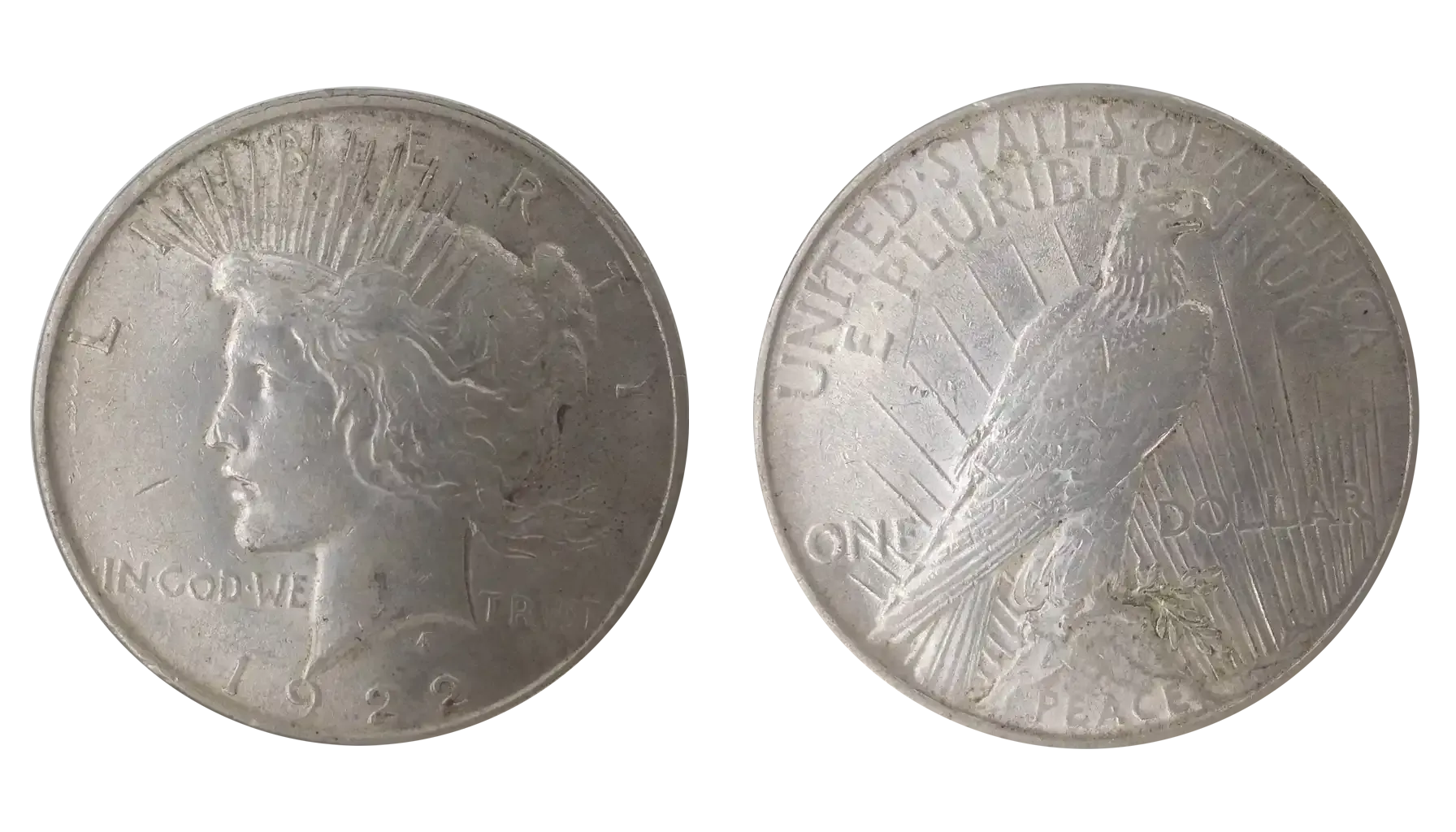
This error occurs when the die used to strike the coin receives multiple, misaligned impressions from the hub, resulting in a doubled appearance of design elements on the obverse. The prominence of doubling can vary from minor to highly visible.
While not as famous for strong DDOs as some other series, minor doubling can occasionally be found. Collectors often look for doubling on the date or "LIBERTY." The design of the 1922 Peace dollar coin was specifically modified to be low-relief for easier striking compared to the 1921 issue.
Market Value
Grade and Visibility | Value |
XF-40 (Minor) | $100 - $250 |
AU-50 (Minor) | $200 - $400 |
MS-60 (Minor) | $300 - $600 |
MS-63 (Moderate) | $750 - $1,500 |
MS-65 (Strong/Major) | $2,000 - $5,000~ |
Prices of Liberty One Dollar coin 1922 are approximate and may vary depending on the condition, market demand, and other factors.
Off-Center Strike Error
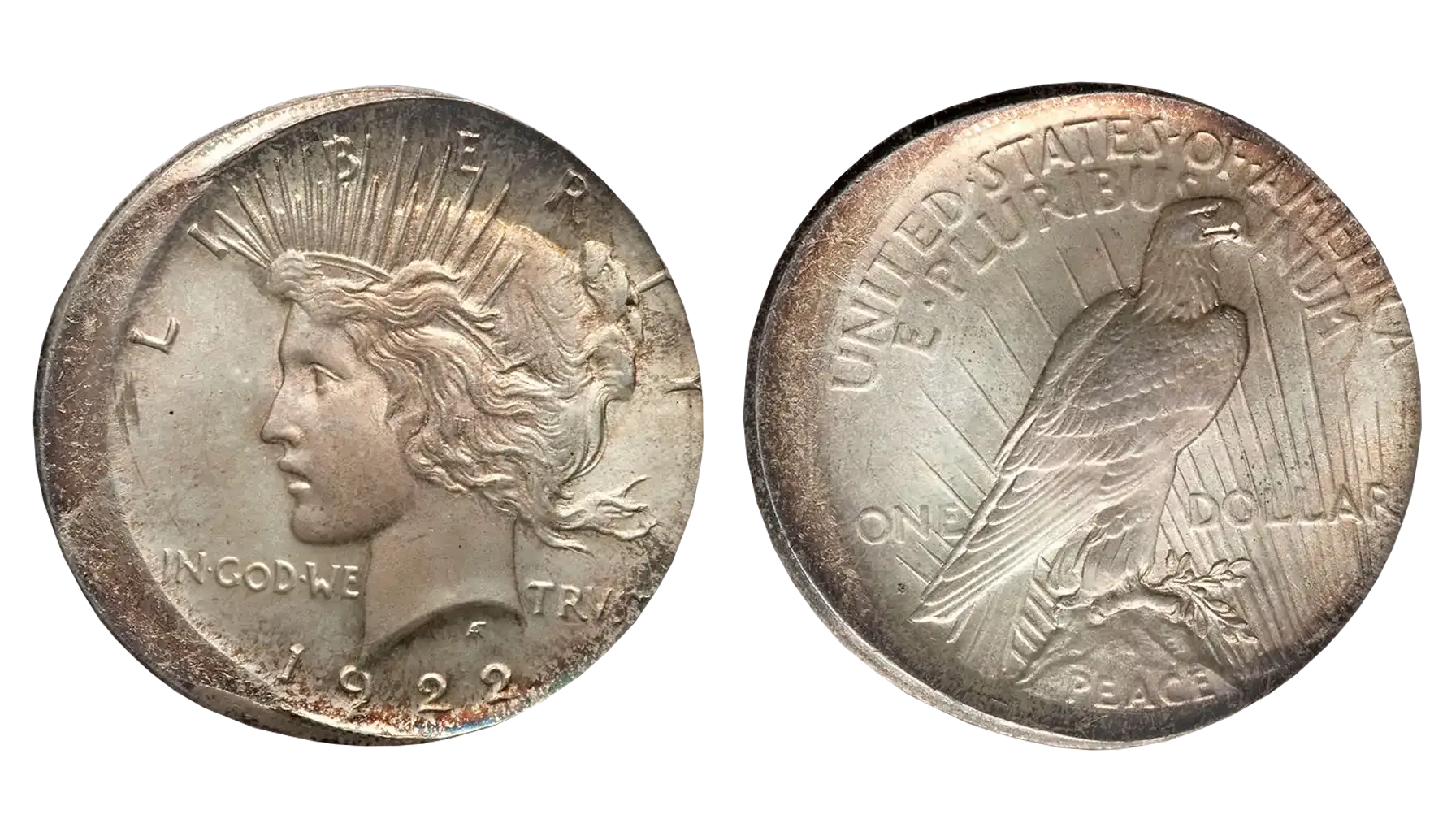
An error coin 1922 Silver Dollar value can be exponentially higher than a standard issue, particularly for prominent minting mistakes. This error occurs when the planchet is not perfectly centered between the dies at the moment of striking.
This results in part of the design being missing and a blank, curved area on one side. The 1922 1 dollar coin value depends on the percentage off-center, with more dramatic examples being more valuable, especially if the date and mint mark are still visible. The 1922 One Dollar liberty coin is officially known as the Peace $1 due to its allegorical design.
Market Value
Degree of Off-Center | Value |
5-10% (Slight) | $75 - $150 |
10-25% (Moderate, full date) | $150 - $350 |
25-50% (Significant, partial date) | $400 - $1,000 |
50%~ (Dramatic, some features) | $1,200 - $3,000~ |
Answering the question “how much is a 1922 one dollar coin worth”, know that listed prices are approximate and may vary depending on the condition, market demand, and other factors.
Die Cracks and Cuds Error
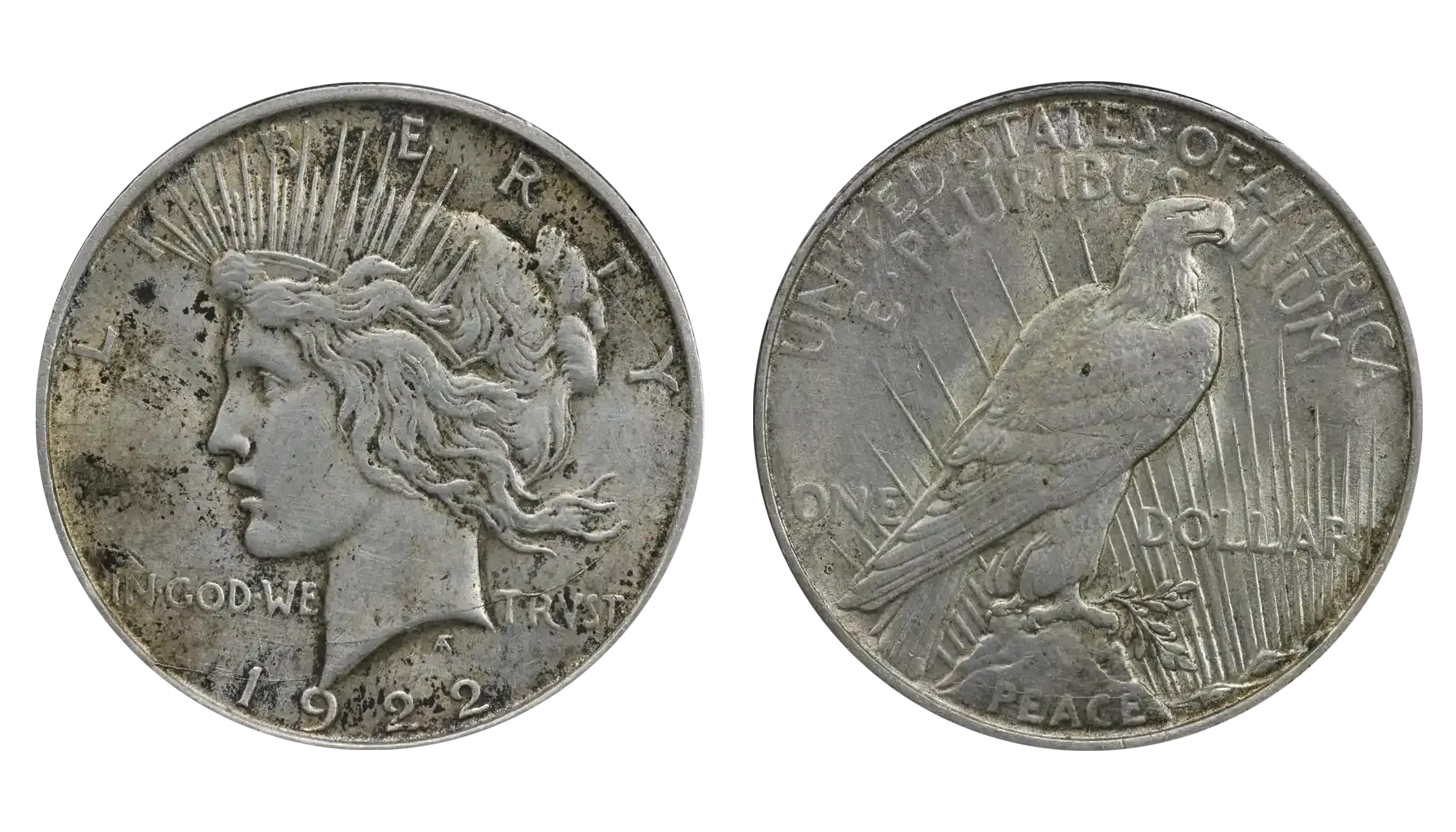
The One Dollar coin 1922 value can range from common bullion prices to significant premiums for high-grade or error varieties.This error appears as raised lines on the surface, caused by cracks that develop in the die from repeated striking. They can range from thin, hairline cracks to prominent, branching lines and influence the 1922 US silver dollar coin value.
A cud is a more severe form of die break, where a piece of the die breaks off from the rim and extends into the design area. This results in a raised, unengraved blob of metal. Cuds are particularly prized if they are large or well-defined, so in affects how much is a 1922 liberty dollar coin worth.
Market Value
Type of Error | Value |
Minor die crack | $40 - $80 |
Prominent die crack | $80 - $200 |
Small cud | $250 - $600 |
Large/Significant cud | $700 - $2,000~ |
Listed prices are approximate and may vary depending on the coin's condition, market demand, and other factors.
Struck Through Error

The 1922 One Dollar coin value today reflects both its intrinsic silver content and its error type. This error occurs when a foreign object comes between the die and the planchet during striking. The object prevents a portion of the design from being fully struck, leaving a "blank" or irregular area.
Market Value
Severity of Error | Value |
Minor grease strike | $50 - $150 |
Noticeable material struck through | $150 - $400 |
Significant/Identifiable object | $500 - $1,500~ |
How much is a dollar coin from 1922 worth Listed may vary depending on the condition, market demand, and other factors.
In essence, when assessing the potential of a 1922 Peace Dollar, remember that key factors determining the 1922 Silver Dollar coin value include its mint marks and its overall grade. Beyond its inherent silver content, the specific mint of origin and the preserved condition are paramount in distinguishing a common piece from a truly valuable numismatic specimen in the collector's market.

